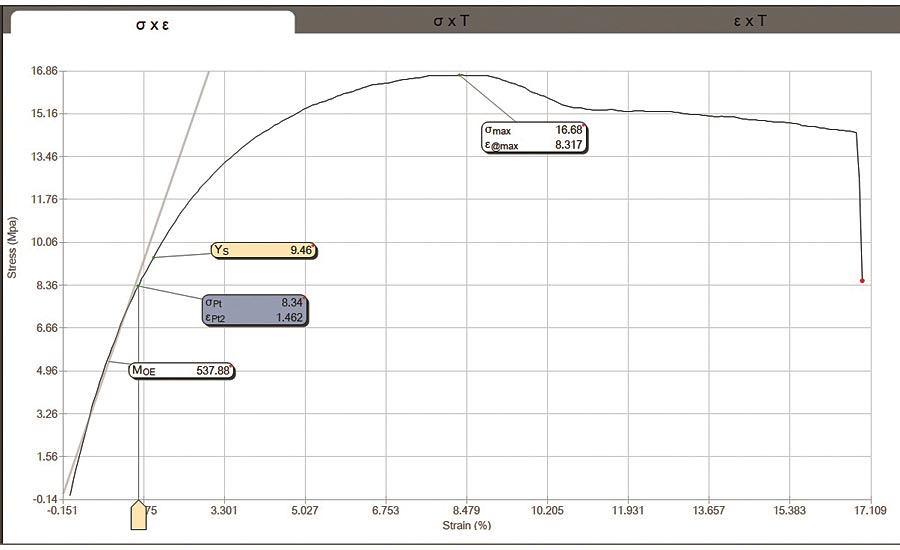Introduction
Stress-strain testing is a fundamental concept in materials science and engineering. It involves subjecting a material to controlled forces and measuring its response, providing valuable insights into its mechanical properties. This blog post aims to provide a comprehensive understanding of stress-strain testing, its significance, and the parameters involved.
What is Stress?
Stress is defined as the force per unit area applied to a material. It is a measure of the internal resistance of a material to deformation. Stress is typically denoted by the symbol σ and is expressed in units of force per unit area, such as Pascals (Pa) or pounds per square inch (psi).
What is Strain?
Strain is the measure of deformation experienced by a material when subjected to stress. It quantifies the change in shape or size of a material relative to its original dimensions. Strain is denoted by the symbol ε and is a dimensionless quantity.
Stress-Strain Curve
The stress-strain curve is a graphical representation of the relationship between stress and strain for a given material. It provides valuable insights into the material’s mechanical behavior and helps determine its strength, stiffness, and ductility.
Elastic Region
In the elastic region of the stress-strain curve, the material deforms under stress but returns to its original shape once the stress is removed. This region is characterized by a linear relationship between stress and strain, known as Hooke’s Law.
Yield Point
The yield point marks the transition from elastic to plastic deformation. Beyond this point, the material undergoes permanent deformation even after the stress is removed. The yield point is an important parameter in determining the material’s strength and its ability to withstand loads without permanent damage.
Plastic Region
In the plastic region, the material continues to deform under stress, and the relationship between stress and strain becomes nonlinear. Plastic deformation is irreversible, and the material may exhibit strain hardening or softening depending on its composition and microstructure.
Summary

Stress-strain testing is a crucial technique used to evaluate the mechanical behavior of materials under various loading conditions. By applying controlled forces, the resulting deformation or strain can be measured, allowing engineers and scientists to determine important material properties such as elasticity, yield strength, ultimate tensile strength, and more.
This blog post will delve into the basics of stress-strain testing, including the concepts of stress and strain, the different types of stress-strain curves, and the significance of key parameters such as Young’s modulus and Poisson’s ratio. Additionally, we will explore common testing methods, such as tensile testing, compression testing, and shear testing, and discuss their applications in different industries.
Understanding stress-strain testing is essential for designing and selecting materials for various applications, ranging from structural engineering to biomedical devic es. By comprehending the mechanical behavior of materials, engineers can ensure the safety, reliability, and optimal performance of their designs.
- Q: What is stress-strain testing?
- A: Stress-strain testing is a method used to determine the mechanical properties of materials by subjecting them to controlled amounts of stress and measuring the resulting strain.
- Q: What is stress?
- A: Stress is the force applied to a material per unit area. It is a measure of the internal resistance of a material to deformation.
- Q: What is strain?
- A: Strain is the measure of deformation or elongation of a material in response to applied stress. It is usually expressed as a ratio of the change in length to the original length of the material.
- Q: What are the common types of stress-strain curves?
- A: The common types of stress-strain curves include elastic, plastic, and brittle. These curves describe the behavior of materials under different levels of stress.
- Q: What is the elastic region in stress-strain testing?
- A: The elastic region is the initial part of the stress-strain curve where the material deforms elastically, meaning it returns to its original shape once the stress is removed.
- Q: What is the yield point?
- A: The yield point is the stress level at which a material begins to deform plastically, meaning it undergoes permanent deformation even after the stress is removed.
- Q: What is ultimate tensile strength?
- A: Ultimate tensile strength is the maximum stress a material can withstand before it breaks or fractures.
- Q: What is the modulus of elasticity?
- A: The modulus of elasticity, also known as Young’s modulus, is a measure of a material’s stiffness or ability to resist deformation in the elastic region.
- Q: How is stress-strain testing useful?
- A: Stress-strain testing helps engineers and scientists understand the mechanical behavior of materials, determine their suitability for specific applications, and design structures that can withstand expected loads and stresses.

Welcome to my website! My name is Joseph Wager, and I am a professional Flexographic Printing Operator with a passion for all things related to printing, artistic showcases, architectural blueprinting, and material science & testing. With years of experience in the industry, I am excited to share my knowledge and expertise with you.
